Astronomy Science Olympiad Master – Flashcards
Unlock all answers in this set
Unlock answersquestion
Optical double
answer
not actually binaries simply two stars lying along same line of sight (similar RA & dec) Not gravitationally bound Not usefull in determining stellar masses
question
Visual binary
answer
both stars resolved independently if orbital pd not too long, can monitor motion provides angular separation from center of mass If dist known, linear separations can be calculated
question
Astrometric binary
answer
If one significantly brighter, not possible to see both directly Exitence deduced by observing oscillatory motion of visible member
question
Spectrum binary
answer
two superimposed independent discernible spectra Doppler effect causes shifting of spectral lines
question
Spectroscopic binary
answer
if period not too long Orbital motion has component along line of sight Periodic shift in spectral lines observable Only 1 set of periodically varying spectral lines seen
question
Systems able to provide us with mass determination
answer
Visual binaries combined with parallax info Visual binaries with radial velocities available over complete orbit Eclipsing double-line spectroscopic binaries
question
O stars
answer
Hottest blue-white stars with few lines Strong He II absorption (sometimes emission) lines He I absorption lines becoming stronger
question
B stars
answer
Hot blue-white He I absorption lines strongest at B2 H I (Balmer) absorption lines getting stronger
question
A stars
answer
White Balmer absorption lines strongest at A), becoming weaker later Ca II absorption lines becoming stronger
question
F stars
answer
Yellow-white Ca II lines continue to increase, Balmer lines decrease Neutral metal absorption lines (Fe I, Cr I)
question
G stars
answer
Yellow Solar-type spectra Ca II increase Fe I, other neutral metal increase
question
K stars
answer
Cool orange Ca II H & K strongest K0, then decrease dominated by metal absorption
question
M stars
answer
Cool red Molecular absorption bands (TiO, VO) Neutral metal absorption lines remain strong
question
L stars
answer
Very cool, dark red Stronger in infrared Strong molecular absorption bands of metal hydrides, water, CO, Na, K, Rb, Cs, Alkalis TiO, VO decrease
question
T stars
answer
Coolest, Infrared Strong methane, CO decrease
question
Wolf-Rayet stars
answer
discovered by C.J.E. Wolf and G. Rayet Paris Observatory in 1867 more than 220 WR identified, most likely more 25,000 to 100,000 K losing mass at over 10^-5 Solar masses per year Wind speeds of 800 to 3000+ kilometers per second Rapidly rotating Can have starting masses of under 20 solar masses No dramatic variability
question
P Cygni profile
answer
Absorption trough at short-wavelength edge superimposed on rather broad emission peak
question
FU Orionis
answer
contain instabilities in circumstellar accretion disk Results in 0.01 solar masses being dumped T-Tauri may go through several stages
question
Herbig Ae/Be
answer
named for George Herbig spectral type A or B strong emission lines 2 to 10 solar masses tend to be enveloped much shorter lifetimes
question
Herbig-Haro objects
answer
contain jets of gas first discovered in vicinity of Orion nebula by george Herbig & Guillermo Haro in early 1950s
question
Proplyds
answer
circumstellar disks around stars in Orion Nebula appear to protoplanetary disks around less than 1million year old stars Masses more than 2 * 10^25 kg
question
Wien's law
answer
(Peak wavelength)(Temperature) = 0.002897755 mK
question
Stefan Boltzmann Law
answer
Luminosity = 4(pi)(radius)^2(stefan-boltzmann constant)(effective temperature)^4 Stefan-Boltzmann constant - 5.670400*10^-8 W m^-2 K^4
question
Stellar parallax
answer
d = 1/p" pc
question
Distance modulus
answer
m-M = 5 log d - 5 = 5 log (d/10pc)
question
Diffuse molecular clouds
answer
Also known as translucent molecular clouds 15 to 50 K n around 5 * 10^8 to 5*10^9 m^-3 M around 3 to 100 solar masses Several parsecs across
question
Birth
answer
The life cycle differs between stars depending on their mass. Normal-mass stars begin in stellar nurseries, and some matter condenses to create a protostar. This gains more mass until fusion (H -> He) begins, when it becomes a main-sequence star.
question
Stellar Nursery
answer
Also called a molecular cloud, is the cloud of matter from which stars originate. They are clouds primarily consisting of hydrogen which are dense and big enough that molecules are formed from atoms. They are not extremely common in the interstellar medium (ISM), but they are the densest objects in it. The molecular gas found in the Milky Way corresponds with its spiral system.
question
Protostar
answer
When a star is in free-fall collapse.
question
T Tauri Star
answer
Pre-main-sequence variable stars with spectral classes from F to M. They have many emission lines in their spectra, indicating their strong stellar winds. They are easy to identify and can be used as traces of solar-mass star formation regions. Appear within dark dust clouds.
question
Main Sequence
answer
Stars spend the majority of their lives (about 80 percent) at this stage. How long a star remains here depends on its mass.
question
H-R Diagram
answer
Important with regards to stellar evolution because it can be used to identify the life cycle of a star, as well as characteristics of the stars in a star cluster. Most stars will follow certain paths, so by plotting a star, we can estimate its position within the stellar evolutionary cycle.
question
Hayashi Track
answer
Explains the lives of low-mass stars with solar masses less than 0.5, and it was developed by Japanese scientist Chushiro Hayashi. All stars in this track become fully convective, and so it mostly applies to red dwarves. As the stars become denser, they become less luminous, until fusion begins, when they get warmer. This leads them to the main sequence.
question
Turnoff Point
answer
The point at which the stars deviate from the main sequence after using up most of their fuel.
question
Andromeda
answer
M31 galaxy
question
Cancer
answer
M44 Beehive Cluster
question
Canes Venatica
answer
M51 Whirlpool Galaxy
question
Deep Sky Object: NGC 7293
answer
Constellation: Aquarius AKA Helix nebula, large planetary nebula, closest nebula to earth in the constellation Aquarius.
question
Star: NGC 281
answer
Constellation: Cassiopeia
question
Deep Sky Object: 30 Doradus
answer
Constellation:Dorado
question
Stars: Castor & Pollux
answer
Constellation: Gemini
question
Deep Sky Object: M13 Globular Cluster
answer
Constellation: Hercules
question
Star: Vega
answer
Constellation: Lyra
question
Stars: Betelgeuse & Rigel
answer
Constellation: Orion
question
Star: Algol
answer
Constellation: Perseus
question
Deep Sky Objects: Sgr A, M17, G359.23-0.82
answer
Constellation: Sagittarius
question
Star: Antares
answer
Constellation: Scorpius
question
Stars: Aldebaran & HL Tau
answer
Constellation: Taurus
question
Star: Polaris
answer
Constellation: Ursa Minor
question
Stars: Mizar & Alcor
answer
Constellation: Ursa Major
question
Star: Velorum
answer
Constellation: Vela
question
Star: Spica
answer
Constellation: Virgo
question
Astronomical Unit
answer
A.U. 1.496x10(11) meters
question
Atomic Mass Constant
answer
Mu 1.6605386x10(-27) kg
question
Boltzmann Constant
answer
k 1.3806505x10(-23) J K(-1)
question
Electron Volt
answer
eV 1.60217653x10(-19) J
question
Gravitational Constant
answer
G 6.6742x10(-11)m(3)kg(-1)s(2)
question
Gravity Constant over h-bar
answer
G/h C 6.7087x10(-39) ((GeV/c(2))(-2)
question
Light Year
answer
ly 9.4605x10(15)m
question
Mass of Proton
answer
Mp 1.67262171x10(-27)kg
question
Mass of Neutron
answer
Mn 1.67492728x10(-27)kg
question
Mass of Electron
answer
Me 9.1093826x10(-31)kg
question
Mass of Hydrogen Atom
answer
Mh 1.6735x10(-27)kg
question
Parsec
answer
pc 3.0857x10(16) m
question
Planck Constant
answer
h 6.6260693x10(-34) s
question
Planck Constant over 2(pi)
answer
h(+) 1.05457168x10(-34) J s
question
Rydberg Constant
answer
R(infinity) 6.6x10(-12)
question
Solar Mass
answer
Mo 1.989x10(30)kg
question
Solar Radius
answer
Ro 6.9599x10(8) m
question
Solar Luminosity
answer
Lo 3.90x10(26) W
question
Speed of Light
answer
c 299,792,458 m s(-1)
question
Standard Atmosphere
answer
101,325 Pa
question
Stefan-Boltzmann Constant
answer
o 5.670400x10(-8) W m(-2) K(-4)
question
Wien Displacement Law
answer
b 2.8977685x10(-3) n K
question
Year - Earth
answer
365.2564 days 3.156x10(7) sec
question
Cas A
answer
A supernova remnant in the constellation Cassiopeia. It is about 11,000 light years away.
question
Cygnus X-1
answer
A deep sky object in Cygnus constellation. It is an intense x-ray source neat Eta Cygni and is thought to be a black hole in orbit around the 9th-magnitude blue supergiant about 8,000 light-years away in our own galaxy.
question
M1
answer
a supernova remnant in the constellation Taurus, the supernova was caused by a supergiant collapsing inward and exploding, in the center of the crab pulsar there is a rapidly rotating neutron star, crab pulsar is the strongest persistent source of x-rays and gamma rays
question
Aquarius
answer
Found in region often called the sea, Brightest star: Beta Aquarii
question
Auriga
answer
Brightest Star: Capella; Charioteer constellation is north of celestial equator, a hexagon with a very short side on top. Contains Capella.
question
Carina
answer
Part of old constellation Argo Navis, Brightest star: Canopus
question
Centaurus
answer
Brightest star: Alpha Centauri, Nearest star: Proxima Centauri
question
Cassiopeia
answer
Brightest star: Alpha Cassiopeia; opposite of the Big Dipper on star map
question
Dorado
answer
Brightest Star: Alpha Dorado
question
Cygnus
answer
Known as the Northern Cross; Brightest star: Deneb
question
Gemini
answer
Brightest Star: Pollux; Second Brightest Star: Castor
question
Libra
answer
Brightest Star: Gliese 570; also contains Gliese 581, which has a planetary system of 6 planets
question
Hercules
answer
Fifth largest modern constellation, Brightest Star: Beta Herculis
question
Lyra
answer
Brightest Star: Vega, second brightest star in the northern hemisphere
question
Orion
answer
Sometimes subtitled The Hunter; Brightest Stars: Rigel and Betelguese
question
Perseus
answer
Brightest Star: Alpha Persei; most well-known star is Algol, the head of Medusa in Perseus's hand.
question
Sagittarius
answer
Brightest Star: Epsilon Sagittarii
question
Scorpius
answer
Brightest Star: Antares; constellation is largest one in southern hemisphere
question
Taurus
answer
Brightest Star: Aldebaran; Taurus also includes two of the nearest open clusters to Earth, the Hyades and the Pleiades
question
Ursa Minor
answer
Also known as the Little Bear or the Little Dipper; Brightest Star: Polaris
question
Ursa Major
answer
Also known as the Great Bear or the Big Dipper; Brightest Star: Epsilon Majoris; there is also a double star with Mizar and Alcor
question
Vela
answer
Another part of the Argo Navis (the sails); Brightest Star: Gamma Velorum
question
Virgo
answer
Brightest Star: Spica; second largest constellation in the sky.
question
Birth
answer
The life cycle differs between stars depending on their mass. Normal-mass stars begin in stellar nurseries, and some matter condenses to create a protostar. This gains more mass until fusion (H -> He) begins, when it becomes a main-sequence star.
question
Stellar Nursery
answer
Also called a molecular cloud, is the cloud of matter from which stars originate. They are clouds primarily consisting of hydrogen which are dense and big enough that molecules are formed from atoms. They are not extremely common in the interstellar medium (ISM), but they are the densest objects in it. The molecular gas found in the Milky Way corresponds with its spiral system.
question
Protostar
answer
When a star is in free-fall collapse.
question
Absolute Magnitude
answer
The apparent magnitude a star would have if it were located at a standard distance of 10 parsecs (32.6 ly) from Earth
question
Absorption Line
answer
A dark feature corresponding to the absorption of loght at that wavelength
question
Absorption Nebula
answer
(a.k.a. dark nebula) A dust - laden cloud that blacks out light from background stars and appears as a dark patch in the sky
question
Accelerating Universe
answer
A universe that expands at an accelerating rate. Current evidence indicates that the expansion of our universe had been slowing down under the action of gravity until about 6 billion years ago, but that since then it has been accelerating. The acceleration is believed to be driven by the repulsive influence of dark energy.
question
Accretion
answer
1. The colliding and sticking together of small, solid particles and bodies to make progressively larger ones. 2. The process by which a body grows in mass by accumulatig matter from its surroundings.
question
Accretion Disk
answer
A disk of gas that revolves around a star or a compact object such as a white dwarf, neutron star or black hole and has been drawn in from a companion star or from neighboring gas clouds.
question
Active Galaxy
answer
A galaxy that emits an exceptional amount of energy over a wide range of wavelengths, from radio waves to X-Rays.
question
Active Galactic Nucleus
answer
(AGN) The compact, highly luminous core of an active galaxy that, in many cases, varies markedly in brightness over time, and is thought to be powered by the accretion of gas onto a supermassive black hole.
question
Active Prominence
answer
(Eruptive Prominence) Undergoes rapid changes.
question
Albedo
answer
Ratio of the amount of loght reflected by a body, like a planet or part of its surface, to the amount of light it recieves from the sun. Can range from 0 - 1.
question
Altazimuth Mounting
answer
Mounting that allows telescope to be rotated in altitude (horizontally) and in azimuth (vertically). Many modern telescopes are mounted like this, using computerized motors to drive the telescope in altitude and azimuth to drag an object's motion across the sky.
question
Altitude
answer
The angular distance between the horizon and a celestial body. Takes values from 0 degrees to 90 degrees.
question
Annual parallax
answer
The maximum angular displacement of a star from its mean position due to parallax. The greater the distance from a star, the smaller its parallax.
question
Annual Proper Motion
answer
The angle (seldom more than a small fraction of 1 sec. of angular measurement) through which a star appears to shift in the course of 1 year.
question
Annular Eclipse
answer
When the moon passes directly between the Sun and Earth when it is close to apogee, it will appear smaller than the Sun, and its dark disk will be surrounded by a ring, or annulus, of sunlight.
question
Antimatter
answer
Material composed of antiparticles.
question
Antiparticle
answer
An elementary particle that has the same mass as a particle of ordinary matter but exactly opposite values of other quantities auch as spin and electrical charge. If a particle and its antiparticle collide, both are annihilated and converted into energy.
question
Aperture
answer
The clear diameter of the objective lens or primary mirror of a telescope or other optical instrument.
question
Aphelion
answer
The point on its elliptical orbit at which a body such as a planet, asteroid or comet, is at its greatest distance from the Sun.
question
Apogee
answer
The point on its elliptical orbit around Earth at which a body such as the moon or a spacecraft is at its greatest distance from the Earth.
question
Arachnoid
answer
A type of stucture, found on the surface of Venus, that consists of concentric circular or oval fractures or ridges, together with a complex network of fractures or ridges that radiate outward. Its name derives from its superficial resemblance to a spider web. Typical diameters range from 30 - 110 miles (50 - 175 km).
question
Asterism
answer
A conspicuous pattern of stars that is not itself a constellation. A well - known example is the Big Dipper, which forms part of the constellation Ursa Major (the Great Bear).
question
Asteroid
answer
One of the vast number of small bodies that revolve independently around the sun. Their diameters range from a few yards (meters) to around 600 miles (1,000 km).
question
Astronomical Unit (AU)
answer
A unit of distance measurement equal to the semimajor axis of Earth's elliptical orbit, equalivent to the average of the maximum and minimum distances between the Earth and the Sun. 1 AU = 92,956,000 miles (149,598,000 km).
question
Atom
answer
A basic building block of matter that is the snallest unit of the chemical element possessing the characteristics of that element. It consists of a nucleus of protons and neutrons, surrounded by a cloud of electrons. An atom has the same number of orbiting electrons as it has protons, so it is neutral (has no electrical charge). The chemical identity of an atom is determined by the number of protons in its nucleus.
question
Aurora
answer
A glowing, flucuating display of light that is produced when charged particles entering a planet's upper atmosphere, usually in the vicinity of its north and south magnetic poles, collide with atoms and stimulate them to emit light.
question
Azimuth
answer
The angle between the north point on an observer's horizon and a celestial object, measured in a clockwise direction around the horizon. The azimuth of die north is 0 degrees, due east 90, due south 180 and due west 270.
question
Barred Spiral Galaxy
answer
Has spiral arms emanating from the ends of an elongated, bar - shaped nucleus.
question
Baryon
answer
A particle, composed of three quarks, that is acted on by the strong nuclear force. Examples include protons and neutrons, the building block of atomic nuclei.
question
Big Bang
answer
The event in which the universe was born. According to Big Bang theory, the universe originated a finite time ago in an extremely hot, dense initial state and ever since then has been expanding. The Big Bang was the origin of space, time and matter.
question
Big Crunch
answer
The final state that will be reached by the universe if it eventually ceases to expand and then collapses in on itself.
question
Big Rip
answer
The tearing apart of all forms of structure in the universe - galaxy clusters, galaxies, stars, planets, atoms, and elementary particles - that is expected to occur should the repulsive effect of dark energy become infinitely strong in a finite time.
question
Binary star
answer
Two or more stars that revovle around each other under the influence of their initial gravitational attraction. Each member star orbits the center of mass of the system, a point that lies closer to the more massive of the two stars.
question
Black Body
answer
An idealized body that absorbs and reemits all the radiations that fall on its surface and which is a perfect radiator. A black body emits a continuous spectrum of radiation (black - body radiation) that peaks in brightness at a wavelength that depends on its surface temperature - the hogher the temerature, te shorter the wavelength of peak brightness.
question
Black Dwarf Star
answer
A white dwarf star that has been cooled to such a low temperature that it emits no detectable light. There has not been enough time since the origin of the universe to cool down enough to become a black dwarf star.
question
Black Hole
answer
A compact region of space, surrounding a collapsed mass, within which gravity is so powerful that no material object, light, or any other radiation can escape to the outside universe.
question
Blazar
answer
The most variable type of active galaxy, which includes BI, Lacerate objects and the most violently variable quasars.
question
Bt. Lacerate Object
answer
A type of active galaxy that has
question
NGC 6240
answer
Is the result of a collision of two supermassive black holes in the same galaxy; Binary black holes; About 330 million light years (redshift = 0.0245)
question
3C321
answer
Centaurus A, Jet from a black hole at the center of a galaxy striking another galaxy ;About 1.4 billion light years
question
Stephan's Quintet
answer
Galaxy collision; One galaxy passing through the core of 4 galaxies; About 280 million light years (redshift z = 0.02) ; HCG 92
question
MACSJ0717.5+3745
answer
where four separate galaxy clusters have been involved in a collision, the first time such a phenomenon has been documente;About 5.4 billion light years
question
Bullet Cluster
answer
Collision of two galaxy clusters, of dark matter and the dynamics of million-degree gas; About 3.8 billion light years
question
Perseus A
answer
a strong emitter of X-rays due to the presence of a black hole in the center of the galaxy; About 250 million light years
question
SN 2006gy
answer
The supernova SN 2006gy is the brightest and most energetic stellar explosion ever recorded and may be a long-sought new type of explosion;About 238,000,000 light years
question
NGC 4603
answer
Spiral Galaxy ; Most distant galaxy with beckoning Cepheids
question
NGC 2623
answer
that a merger of two or three galaxies has occurred; 291 million light years
question
NGC 1068
answer
gas blowing away in a high-speed wind from the vicinity of a central supermassive black hole ;50 million light years
question
SN1996ber
answer
Supernova
question
NGC 7771
answer
3 Galaxies in group; Biggest spiral
question
JKC 5041
answer
Most distant galaxy cluster ever discovered; Discovered when Universe was 1/4 its current age
question
H2356-309
answer
Vast resevoir of gas ; near wall type structure of galaxies
question
Quasar
answer
A distant galaxy that emits a huge amount of energy; Produced by gas falling into a supermassive black hole in the center of the galaxy
question
AGN
answer
Active Galactic Nucleus; The central region of a galaxy that shows unuasal energetic activity
question
Galaxy Cluster
answer
Galaxies can swarm togethterto form groups and clusters of galaxies held together by their mutual gravity.
question
Dark matter
answer
A term used to describe the mass in galaxies that can be inferred to exist from its gravitational effects, but has not been directly detected by electromagnetic radiation
question
Type- 1 Supernova
answer
One possible explosive death of a star.An accretion of gas from a companion star or another white dwarf pushing another white dwarf creating explosive nuclear fusion reactions that release an enormous amount of energy
question
Type 2 Supernova
answer
One possible explosive death of a star in which the massive highly evolved stellar core rapidly implodes and then explodes.
question
Eclipsing binary
answer
Rare binary- star system that is aligned in such a way from Earth we observe one star pass in front of the other, eclipsing the other star
question
Supermassive Black hole
answer
Giant black hole, with a mass millions to billions of times that of our Sun, thought to reside in the centers of many galaxies and to power active galactic nuclei.
question
Black hole
answer
a region of space resulting from the collapse of a star
question
X-ray Binaries
answer
a binary star system in which one of the stars, or the gas associated with a star emits x-rays intensely,
question
Kepler's First law
answer
All planets move about the sun in an elliptical orbit with the sun at one focus
question
Kepler's Second Law
answer
As the planet moves in its orbit, a line from the sun to the planet sweeps out equal areas in equal times
question
Kepler's Third Law
answer
A planet orbital period squared, is porportional to its average distance from the sun cubed; A^3=P^2
question
Hubble's Law
answer
The principle that states the distance of external galaxies from the earth is proportional to their redshift
question
Hubble's Constant
answer
The constant which determines the relationship between the distance to a galaxy and its velocity of recession due to the expansion of the Universe
question
Orion
answer
a constellation on the equator east of Taurus between Betelqeuse and rigel
question
Electromagnetic Spectrum
answer
the entire frequency range of electromagnetic waves
question
Epsilon Aurigae
answer
binary star system of about third magnitude having one of the longest orbital periods (27 years) among eclipsing binaries; 2,000 light-years from Earth
question
Light year
answer
the distance traveled by light moving in a vacuum in the course of one year
question
spectra
answer
an array of entities, as light waves or particles, ordered in accordance with the magnitudes of a common physical property, as wavelength or mass: often the band of colors produced when sunlight is passed through a prism, comprising red, orange, yellow, green, blue, indigo, and violet.
question
light curves
answer
a graph showing variations in brightness of celestial objects over time.
question
cosmological distance
answer
Distance measures are used in physical cosmology to give a natural notion of the distance between two objects or events in the universe.
question
apparent magnitude
answer
The apparent magnitude (m) of a celestial body is a measure of its brightness as seen by an observer on Earth, adjusted to the value it would have in the absence of the atmosphere.
question
stellar magnitude
answer
He called the brightest ones "of the first magnitude," simply meaning "the biggest." Stars not so bright he called "of the second magnitude," or second biggest. The faintest stars he could see he called "of the sixth magnitude.
question
stellar classification
answer
In astronomy, stellar classification is the classification of stars based on their spectral characteristics. Light from the star is analyzed by splitting it with a prism or diffraction grating into a spectrum exhibiting the rainbow of colours interspersed with absorption lines. Each line indicates an ion of a certain chemical element, with the line strength indicating the abundance of that ion
question
diffraction grafting
answer
an optical component with a periodic structure, which splits and diffracts light into several beams travelling in different directions
question
spectral line
answer
a dark or bright line in an otherwise uniform and continuous spectrum, resulting from a deficiency or excess of photons in a narrow frequency range, compared with the nearby frequencies
question
x-rays
answer
a form of electromagnetic radiation. Most X-rays have a wavelength in the range of 0.01 to 10 nanometers, corresponding to frequencies in the range 30 petahertz to 30 exahertz (3×1016 Hz to 3×1019 Hz) and energies in the range 100 eV to 100 keV. However, much higher-energy X-rays can be generated for medical and industrial uses, for example radiotherapy, which utilizes linear accelerators to generate X-rays in the ranges of 6-20 MeV. X-ray wavelengths are shorter than those of UV rays and typically longer than those of gamma rays
question
ultraviolet
answer
light is electromagnetic radiation with a wavelength shorter than that of visible light, but longer than X-rays, that is, in the range between 400 nm and 10 nm, corresponding to photon energies from 3 eV to 124 eV. It is so-named because the spectrum consists of electromagnetic waves with frequencies higher than those that humans identify as the color violet. These frequencies are invisible to most humans except those with aphakia. Near-UV is visible to a number of insects and birds.
question
optic
answer
the branch of physics which involves the behaviour and properties of light, including its interactions with matter and the construction of instruments that use or detect it
question
radio waves
answer
a type of electromagnetic radiation with wavelengths in the electromagnetic spectrum longer than infrared light. Radio waves have frequencies from 300 GHz to as low as 3 KHz, and corresponding wavelengths ranging from 1 millimeter (0.039 in) to 100 kilometers (62 mi). Like all other electromagnetic waves, they travel at the speed of light. Naturally occurring radio waves are made by lightning, or by astronomical objects.
question
stellar evolution
answer
Stellar evolution is the process by which a star undergoes a sequence of radical changes during its lifetime.
question
nuclear fission
answer
a nuclear reaction or a radioactive decay process in which the nucleus of a particle splits into smaller parts (lighter nuclei). The fission process often produces free neutrons and photons (in the form of gamma rays), and releases a very large amount of energy even by the energetic standards of radioactive decay.
question
Mira
answer
known as omicron ceti long period pulsating red giants that are about the size of the sun. They have entered the last phase of evolution, and will eventually become white dwarfs. more info in the second chapter two packet.
question
W49B
answer
W49B (also known as SNR G043.3-00.2 or 3C 398) is a nebula resulting from a supernova.[1] If the supernova was visible from Earth it would have been seen around 1000 AD (the remnant "is about a thousand years old") which may have produced a gamma-ray burst[2] and may have produced a black hole.[3] W49B is barrel-shaped and located roughly 26,000 light-years from Earth. Recent findings indicate infrared "rings" (about 25 light-years in diameter) around the "barrel", and also indicate intense X-ray radiation coming from nickel and iron along its axis. The star that created this nebula is thought to have formed from a dense dust cloud before throwing off hot, gaseous rings, creating a bubble, and exploding.
question
stellar evolution
answer
How stars are made and what they undergo during their lifespan.
question
mass
answer
Defines the length of life that a star has.
question
nitrogen
answer
Most common and useful element in a star.
question
nuclear fusion
answer
The process that stars use to create power that allows them to stay alive and orbit.
question
Nebulae
answer
(Molecular Clouds) The living of material of a star: Made by combining collapsed clouds with gravitational pull and and dust.
question
protostar
answer
When the molecular clouds have combined to their fullest potential, resulting in a solid form of mass, and a loss of outside gravity unless additional clouds are available outside of the nebulae.
question
Cas A
answer
A supernova remnant in the constellation Cassiopeia. It is about 11,000 light years away.
question
Cygnus X-1
answer
A deep sky object in Cygnus constellation. It is an intense x-ray source neat Eta Cygni and is thought to be a black hole in orbit around the 9th-magnitude blue supergiant about 8,000 light-years away in our own galaxy.
question
M1
answer
a supernova remnant in the constellation Taurus, the supernova was caused by a supergiant collapsing inward and exploding, in the center of the crab pulsar there is a rapidly rotating neutron star, crab pulsar is the strongest persistent source of x-rays and gamma rays
question
Cas A
answer
Type IIb Supernova remnant
question
IGR J17091 (also IGR J17091-3624)
answer
Stellar Mass Black hole (maybe smallest), fastest winds ever recorded
question
NGC 6888 (WR 136)
answer
Wolf Rayet star
question
PSR J0108-1431
answer
Very old Solitary Pulsar/ Neutron Star, in Cetus, 2nd faintest pulsar
question
Cygnus X-1
answer
Binary System with a Blue Supergiant and a compact Object which is likely a Black Hole. The Blue Supergiant is a variable star.
question
SXP 1062
answer
Pulsar in SMC, Supernova created it, maybe Accreting Magnetar
question
M1 (Aka Crab Nebula, Taurus A, NGC 1952, SN 1054)
answer
Supernova remnant, Type I, Pulsar wind nebula (PWN)
question
V838 Mon (Monocerotis)
answer
Red variable star
question
Delta Cep
answer
Binary star system/ Cepheid variable star (pop 1)
question
Alpha Orionis (Aka Betelgeuse)
answer
Semi-regular variable star/Red Giant
question
SN 2010JL
answer
Type IIn Supernova
question
NGC 3582
answer
Nebula/Stellar Nursery
question
LHa115-N19 (Aka: N19)
answer
Supernova/ supernova remnants, in Small Magellanic Cloud, super bubbles forming
question
Rho Ophiuchi cloud complex (Antares)
answer
Dark Nebula w/ Red Supergiant (16th brightest star)
question
IC 1396 (aka Elephant Trunk Nebula)
answer
Ionized gas region/ Nebula
question
Cetus
answer
Mira
question
Cassiopeia
answer
Cas A ; Tycho's star
question
Dorado
answer
LMC
question
Lyra
answer
Vega & M57 Ring Nebula
question
Mensa
answer
LMC
question
Orion
answer
Betelgeuse, Rigel, M42 Orion Nebula
question
Perseus
answer
Algol
question
Sagittarius
answer
Sgr A
question
Scorpius
answer
Antares
question
Taurus
answer
Aldebaran, Hyades Star Cluster, M1 Crab Nebula & M45 Pleiades.
question
Tuscana
answer
SMC
question
Ursa Minor
answer
Polaris
question
Ursa Major
answer
Mizar & Alcor
question
Virgo
answer
Spica
question
Orion
answer
Constellation in the Northern Hemisphere opposite Scorpius so that this constellation sets as scorpion rises in the sky. It represents a giant hunter or warrior followed by his dogs (the constellation Canis Major and Canis Minor). Its most distinctive feature is Orion's belt, a line of three second-magnitude stars. Note: In late October each year, the Orionid meteors appear to radiate from a point near the border of Gemini.
question
Bootes
answer
Herdsman constellation in the Northern Hemisphere that lies in the Milky Way between Cassiopeia and Auriga. It represents the character who was sent to slay Medusa, the Gorgon, in Greek mythology., Constellation in the Northern Hemisphere that extends from Draco and the handle of the Big Dipper in the north to Virgo in the south. This constellation represents a man herding a bear (Ursa Major). Contains Arcturus (fourth brightest star in the night sky); constellation contains many bright stars
question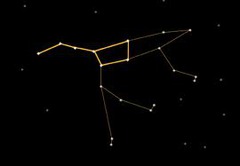
Ursa Major

answer
Constellation found in the Northern Hemisphere. Seven of its stars form the Big Dipper. It represents the Great Bear. The two stars in the dipper's bowl farthest from the handle, Alpha and Beta Ursae Majoris, point toward the north Pole Star, Polaris. In Greek mythology, The Great Bear is identified with two different characters. One is Callisto who was turned into a bear by Zeus's wife, Hera, in a fit of jealousy. The other is Adrasteia, one of two nymphs who nursed the infant Zeus, hiding him from the his murderous father, Cronus.
question
Canis Minor
answer
Constellation in the Northern Hemisphere. It is the smaller of the two dogs of Orion, the hunter.
question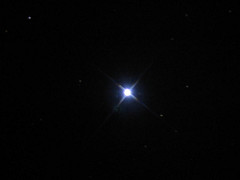
Aquila

answer
Constellation in the Northern Hemisphere with Cygnus to the north and Scutum and Sagitarrius to the south. It represents a flying eagle. Also Is under the Constellation Hercules. Contains Altair.
question
Canis Major
answer
Constellation in the Southern Hemisphere. It is one of the two dogs following Orion, the hunter. Whirlpool Galaxy. Contains Sirius (brightest star in the night sky)
question
Cassiopiea
answer
Seen in the North all year around (the Lady in the chair)
question
Cepheus
answer
This constellation contains NGC 188, the oldest star cluster in the Northern Hemisphere.
question
Cygnus
answer
a constellation in the northern hemisphere between Pegasus and Draco in the Milky Way
question
Draco
answer
(adj): Excessively harsh (penalties); an allusion to an athenian lawmaker in the 7th century whose legal code was unusually severe
question
Gemini

answer
Contains Castor and Pollux.
question
Leo
answer
the lion that Hercules slayed and then turned into a star.
question
Lyra
answer
Constellation in the Northern Hemisphere lies on the edge of the Milky Way next to Cygnus. It represents the instrument played by Orpheus. Note: The Lyrid meteors radiate from a point near the star Vega around April 21-22 every year.
question
Pegasus
answer
(Greek mythology) immortal winged horse that sprang from the blood of the slain Medusa . then when it died it was put into the stars
question
Scorpio
answer
Arachnid that has a long tail with a poisonous, needlelike point on the end. Scorpio killed Orion
question
Taurus
answer
Constellation in the Northern Hemisphere. It represents a bull that was said, in Greek mythology, to be the disguise of the god Zeus
question
Virgo
answer
Found in the northern hemisphere, it is the 2nd largest constellation overall. It has Bootes to the north, Corvus to the south, and Libra to the west. It represents a virgin. 5 to 10 light years away from earth.
question
Arcturus
answer
the 4th brightest star and the brightest star in the constellation Bootes
question
Sirius
answer
Brightest star in the night sky. The "dog" star. Actually a binary star.
question
Procyon
answer
Binary star system, looks like single star. The eighth-brightest star in in the sky found in the Canis Minor Constellation. It has a magnitude of 0.4. It is at a distance of 11.4 light-years to earth. It is slightly farther away than the other dog star, Sirius in Canis Major.
question
Deneb
answer
Brightest star in the Cygnus Constellation. It lies in the tail of the swan. It is a supergiant with a magnitude of 1.3 and over 3,000 light-years away. It is the most distant first-magnitude star.
question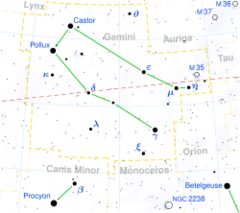
Pollux

answer
Giant, K (Luminosity class, spectral class)
question
Regulus
answer
(aka Alpha Leonis) Brightest star and a rapidly rotating double star in the Leo Constellation located in the Northern Hemisphere.
question
Vega
answer
is the old north star.
question
Betelgeuse
answer
Red supergiant star in the Orion Constellation located in the Northern Hemisphere.
question
Rigel
answer
A luminous blue supergiant star in the Orion Constellation located in the Northern Hemisphere.
question
Antares

answer
Red supergiant star in the Scorpius Constellation located in the Southern Hemisphere.
question
Aldebaran
answer
A red giant in the Taurus Constellation located in the Northern Hemisphere.
question
Pleiades
answer
M57, an open cluster of a few hundred stars in constellation Taurus; six of the stars are easily visible to the naked eye
question
Hyades
answer
Nearest open cluster to the Solar System and one of the best-studied of all star clusters. Located inm Taurus.
question
Merak
answer
Pointer star for Polaris. Apparent brightness=2.37. Bottom right star of the spoon of the Big Dipper
question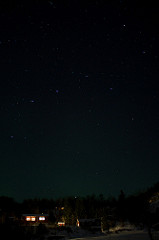
Dubhe

answer
Star at the top of the basket of ursa major, points toward polaris.
question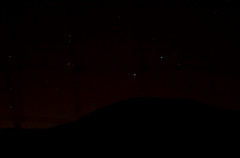
Polaris

answer
A creamy-white supergiant star that is a Cepeid variable in the Ursa Minor Constellation located in the Northern Hemisphere.
question
Spica
answer
The brightest star in the Virgo constellation located in the Northern Hemisphere. It is found at the southern tip of Virgo's sloping Y shape.
question
Cas A
answer
Type IIb Supernova remnant
question
IGR J17091 (also IGR J17091-3624)
answer
Stellar Mass Black hole (maybe smallest), fastest winds ever recorded
question
NGC 6888 (WR 136)
answer
Wolf Rayet star
question
PSR J0108-1431
answer
Very old Solitary Pulsar/ Neutron Star, in Cetus, 2nd faintest pulsar
question
Cygnus X-1
answer
Binary System with a Blue Supergiant and a compact Object which is likely a Black Hole. The Blue Supergiant is a variable star.
question
SXP 1062
answer
Pulsar in SMC, Supernova created it, maybe Accreting Magnetar
question
M1 (Aka Crab Nebula, Taurus A, NGC 1952, SN 1054)
answer
Supernova remnant, Type I, Pulsar wind nebula (PWN)
question
V838 Mon (Monocerotis)
answer
Red variable star
question
Delta Cep
answer
Binary star system/ Cepheid variable star (pop 1)
question
Alpha Orionis (Aka Betelgeuse)
answer
Semi-regular variable star/Red Giant
question
SN 2010JL
answer
Type IIn Supernova
question
NGC 3582
answer
Nebula/Stellar Nursery
question
LHa115-N19 (Aka: N19)
answer
Supernova/ supernova remnants, in Small Magellanic Cloud, super bubbles forming
question
Rho Ophiuchi cloud complex (Antares)
answer
Dark Nebula w/ Red Supergiant (16th brightest star)
question
IC 1396 (aka Elephant Trunk Nebula)
answer
Ionized gas region/ Nebula
question
Altair
answer
Single star, 16.7 light years away, A7 in spectral class. In the constellation Aquila.
question
CoRoT-2A
answer
Yellow dwarf star, with a planet closely orbiting it. G7 class, 930 light yrs.
question
SS433
answer
Eclipsing x-ray binary system, primary star most likely a black hole or neutron star.
question
Arcturus
answer
Single star, 4th brightest star in sky, 36.7 light years away
question
Sirius
answer
Binary star system, looks like single star. Brightest in sky, 36.7 light years away.
question
Carina
answer
Keel constellation, contains Eta Carinae.
question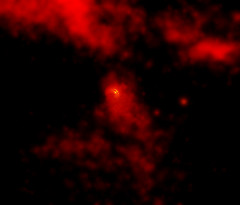
Vela SNR

answer
This is the pulsar located within the DSO.
question
Eta Carinae
answer
Stellar System, 7500-8000 light years away,
question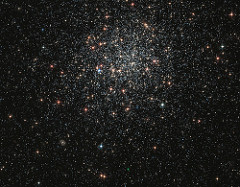
NGC 1846

answer
This is a picture of the entire cluster. Contains a green nebula "bubble."



